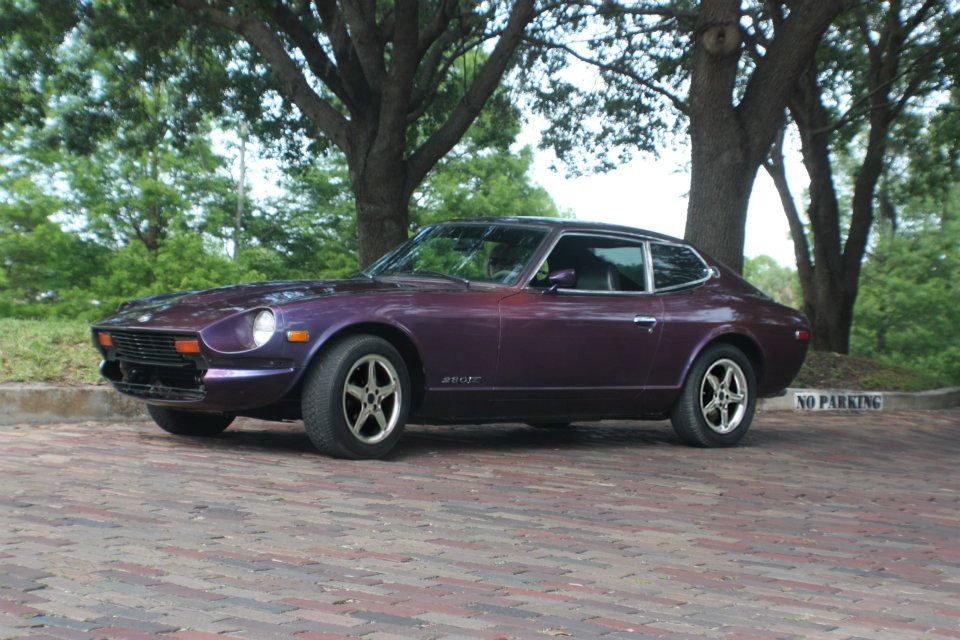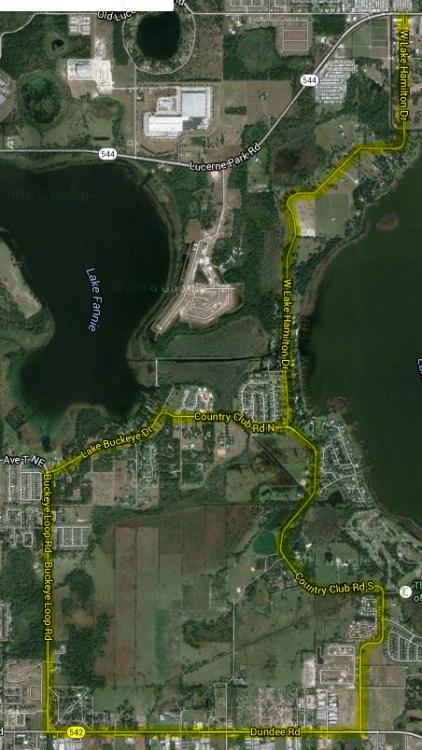
-
Things To Do In Orlando Area?
I'm not sure if the Fantasy of Flight museum is still open but if it is, it's just south of orlando on I-4 (about 5 miles south of 27). It's another aircraft museum, and a bit larger than the one in Kissimmee. Sky Crap, ...er um Sky Craft is kind of cool. it's just a bunch of surplus stuff! If you're creative, you can always find something in there to put on your bench and stare at for a day or two until you come up with something to build.
- Late 260Z Smog Pump adjusting arm
-
Late 260Z Smog Pump adjusting arm
Ok guys and gals, Here is what I did and discovered. I took the "thermostatic valve" off and soaked it in CLR for about 24 hours. It still looked a little rusty in there so I soaked it in some OSPHO for another 24 hours. After that I boiled it in some hot water with a hose attached to it. According to the candy thermometer in the pot with the valve, it closed at about 195 to 200º I thought that a bit too high, but I installed it anyway. After driving around the block a couple of times, it was obvious that the problem was not remedied. I then thought, “why not? I’ll just go ahead and block it up and see what that gets me”. So I put a plug into the hose right before the thermostatic valve. Well, I have not been able to create the problem since! I took a drive at noon down Country Club Rd. (what a great drive for the Z) and not one sputter!!!! I even turned the AC on for the way back just to tax the most out of the engine, and it purred like a kitten!!! So, after all this, I am convinced, the water flowing through the carbs was, plain and simple, just a bad design! Maybe if that water originated post radiator, and not post engine block it might make a little difference.
-
Late 260Z Smog Pump adjusting arm
Oh yeah! it's funny, when the temp gets up to 40 in Alaska, everybody is out in shorts and t-shirts. When the temp gets down to 70 in Florida, everybody has their "Nanook of the North" jackets on! And yes, the only water that goes through that valve is from the carbs, so the other two sources are still there and functioning. (I made sure they were still clear last night) So, if I end up blocking that valve passage, there will still be water flowing through the balance tube and manifolds.
-
Late 260Z Smog Pump adjusting arm
Patcon, yep, I'm in Orlando, and yes it gets cold here!!!! This winter it got down to the low 60's!!!! We all thought the end was surely near! Capt. Obvious, I did the ten second shake test last night, and sure enough it spat on me. So after seeing that I am convinced. I took the thermostat valve off the water line coming from the rear carb and did the heat test. I slowly heated it up with a torch and eventually the valve mostly closed, but long after I think it should have. I cooled it off in a bucket of water (PSSSSsssssss) and then let it soak in a bucket of CLR. It did look rather rusty inside the valve, so tonight I'll remove it and let it soak a few hours in some OSPHO to remove all the rust internally. If it doesn't begin to operate correctly after that, I'll just block it up with something semi permanent.
-
Late 260Z Smog Pump adjusting arm
I will update on the valve cleanout and the "ten second shake test" tonight after I get off work. I'm feeling fairly confident about the whole thing now! ....which is probably not a good thing to even mention. As soon as I begin to feel confident, the car can sense it and whatever is next on the car's "I'll break next" list will go. ...and it never gets cheaper!
-
Late 260Z Smog Pump adjusting arm
Ok, after today's tests, which included re-routing the fuel lines completely, and bypassing the fuel rail, I think I have hit on the cause. I was looking at the inside of the float chamber, studying the interior structure, holes, etc. I looked through the sight glass and noticed where the fuel level would normally be, and I saw that it sits just below the bulge of the water passage inside the chamber. I thought, what if the water going through that passage, which comes directly from the engine block, was heating that water passage "bulge" just enough to boil the fuel when it gets sloshed enough to touch that bulge? So, I took my trusty vice grips and clamped the water line. Sure enough, after getting the engine back up to temp, I couldn't get the problem to occur again! Googling "boiling temp of gasoline" it seems that if the water in that carburetor passage, which comes directly from the engine, is slightly hotter than 180° that bulge in the float chamber will get hot enough to boil the fuel when the fuel touches it. That however leads me to wonder, how this design ever worked in the first place! I'm now left with a couple of options. 1. I currently have too much coolant in the radiator. It should be 50/50 Coolant and water. Because of the high coolant/low water ratio, the temp runs slightly hotter than normal. Somewhere around 185-190°. Getting the coolant correct could help stabilize the temperature and help the carburetors run normally. 2. Install a lower temperature thermostat, which would lower the water temperature in the cooling system and again help stabilize the carburetor temperature, causing it to operate more normal. 3. Close off the water line that goes to the carburetors from the thermostat housing, thus eliminating the over temp in the float bowl of the carburetors. Sorry I didn't get to the test you were suggesting with the bag. I had it all planned out too, but as I sat studying the body of the carb, it started to make a little sense to me.
- Late 260Z Smog Pump adjusting arm
-
Late 260Z Smog Pump adjusting arm
See! That's what I thought at the beginning too, and that's what led me to try to get the smog pump reconnected and functioning. Vaporizing the fuel in the fuel lines (which happens on my #2 "280" all the time, I can hear the bubbles being forced back into the fuel tank on #2 but not in #3, the 260) because the lines are sitting right on top of the Pipe assembly - Air Gallery, which without the cool air being pumped into the air gallery pipe gets REALLY hot. It only seems natural that such a hot pipe sitting just below the fuel rails would heat the rails enough to possibly boil the fuel in them. However, I do not hear the bubbles in the fuel tank like I do on #2 (the fuel rail on #2 is not insulated, so it gets really hot). I don't think I'm leaning toward the fuel rail "vapor lock" any longer due to the fact that I can just shake the car and get boiling fuel squirting out the vent tube. If the fuel were to be boiling in the fuel rail, then shaking the car would not exacerbate the boiling. I could get some clear fuel hose and install it temporarily to watch the fuel go by, and that will at least eliminate one theory. The Mechanical, and electric pumps are stock NISSMO pumps, and, asbestos I can tell working correctly. I would be really amazed if one of the pumps were to be causing cavitation in the fuel. There would need to be a serious negative pressure on the down stroke of the pump to cause cavitation and I just don't believe either pump could have enough "umph" to do that. Now, about that thermostat in series with the water line that goes to the carbs... I have absolutely no idea what you're talking about here. There is the temp sensor right below the thermostat in the bottom part of the thermostat housing, but I think this is not what you are referring to. Other than that, there is only the thermostat housing, the outlet pipe (with three branches), the three hoses that connect to the intake manifold, balance tube, and carburetors respectively. ...and lastly, yes, the car is originally from California. All three of mine are, but #3 is the only one that has any California "stuff" still in/on it. Other than taking the car to a muffler man who will naturally say "Yep! It's clogged. You're gonna need two of those", is there any way to test the catalytic converter to see if it's still good? I'm also thinking of putting a 170º or 160º thermostat it to help keep the engine temp down.
-
tunesnxs changed their profile photo
-
Late 260Z Smog Pump adjusting arm
Capt. Obvious, Yes.... to all the above! I agree there should be no way that fuel should be coming out of that tube. I ran the car at idle yesterday when I got home, and watched, and waited. Once the car got up to temp, all I had to do was jostle the car a bit (shaking from the fender to create an oscillation with the tire play), just enough for the fuel in the bowl to slosh a bit and >SPLOOSH< out comes the gas from that tube!! Of course with the engine running, a lot of that gas gets sucked into the carb, floods the engine, and it dies. I'm not positive my fuel pressure is in spec, but I watched the fuel level in the bowl through the sight glass and other than the waves caused by the engine vibration, the fuel level stays right where it should! Even with hard acceleration the fuel level never goes above the middle of the sight glass, which is the best method I know to ensure the float levels are correct! All the original heat shields are in the proper place. One isolating the exhaust manifold from the carbs. and both on the bottom of the carbs with all the asbestos still firmly attached. When I was feeling the bowl, I was in fact feeling the bowl (between the heat shield on the bottom of the carb, and the bottom of the carb) It was not too hot to touch, unlike EVERYTHING around it!!!! (ouch, ouch.... ouch. ...OUCH!!!!) All the original water passages and tubes are present and functioning correctly. The last time I flushed out the water passages was two weeks ago. Only the water passage going to the balance tube was clogged. It was also clogged when I rebuilt the engine three months ago. I have been flushing out the radiator every month now (three times since the rebuild) and now I think I've finally got all the rust and scaling out of the water passages. There was a LOT of rust and scaling in the engine block and radiator!!! I don't know what else to try. How can I keep the fuel bowl cool enough to not boil the fuel? ....just a thought, and I know it's not closely related, but what if the catalytic converter was clogged? That would cause higher back pressure in the exhaust manifold, which, in theory, would raise temps in the engine bay. Also, what if I put a 170º or even a 160º thermostat in? That could reduce the underhood temp. Or put the outlet from the smog pump directly onto the body of the carbs... I keep going back to the fact that, from the factory, this car ran!!! I have it almost all original! The only thing that is not installed to make it all correct as fresh from the factory, is the smog pump! I'm just at a loss for any other ideas to make it operate like it did from the factory floor. My last option, and I really don't want to do it because this is my all original 260Z, is to put my spare set of '72 round tops on it. Yes, that will solve the problem, but destroy the originality of it! Dammit! It should run!!! O_o
-
Late 260Z Smog Pump adjusting arm
Update, ...the fuel is not coming from the "auxiliary tube" but from the (for lack of a better term) fuel bowl pressurization tube that faces out in the mouth of the venturi of the carb. See photo. As best I can tell, that tube (which is a hole open to the atmosphere, to the fuel bowl) As soon as the fuel in the bowl gets sloshed onto the wall of the fuel bowl, then it comes gushing out of that tube. The fuel seems to be at the correct level in the fuel bowl, as viewed by looking in the inspection window on the side of each carb.
- Late 260Z Smog Pump adjusting arm
-
tunesnxs started following Late 260Z Smog Pump adjusting arm
-
Late 260Z Smog Pump adjusting arm
Yes capt. obvious, it is a late (12-74) 260. It is my 3rd "260" and this one is my all original, so yes it has flat tops. It seems to be percolating out the "auxiliary nozzle for starting" (#6 on drawing ET064 260Z FSM). (I could be wrong on the location of the glurp, but that's where it "appears" to be happening. When I feel the bottom of the carb, where the fuel bowl is, it does seem to be cooler than the rest of the carb, (as one would expect) so I agree it sounds unlikely to be boiling, but I really don't know what else it could be. I have 4 sets of flat top, Hitachi carbs that I try to keep freshly rebuilt. Two of the sets are my favorite as they look and operate (on the bench) better than the other two sets. They have been rebuilt and swapped three times now. (Twice before the engine rebuild, and swapped again with the engine rebuild). The problem only seems to get worse with time. ...and temp! If the outside temp is over 85°f the problem will begin. Over 90°f it becomes just to dangerous to drive. It does happen more when accelerating from a dead stand still, or when turning to the right. The right turn is the worse, but they are both very obvious. When you drive the car to warm it up, then remove the air filter cover and watch after driving it, you can see the gas pouring from the carburetor (mostly the front, but occasionally both) I have re-worked the fuel tank as it was full of rust and debris, and have regularly changed the fuel filter until they began to stay relatively clean, as it is currently. The electric fuel pump was replaced last year and appears to be operating correctly. Mechanical pump is mechanically pumping and all the fuel lines are clear with the return orifice clear and of correct diameter. I'm not really sure what else to try so, I'm really open for suggestions here!
-
Late 260Z Smog Pump adjusting arm
I'm trying to install the smog pump on my all original Late 260Z (with A/C) and can't find where the adjusting arm attaches to the engine/front cover. Does anyone have any photos of the installation? I'm having crazy "vapor lock" problems and I believe if I can get the smog pump back on the engine, it will cool the engine bay just enough to stop the "vapor lock". Just for info on the "vapor lock" problem, when the engine gets up to temp, it will "burp" gas out of the carb (usually the front, but sometimes both it the weather is very hot outside) (it runs like a champ in the winter) and while the engine is at driving speed I can usually keep it running by flooring the gas pedal to clear the gas out of the engine. If the car is idling at a light it will glurp the gas out the carb, and choke the engine out. I'll have to floor the gas petal for about 20-40 seconds to clear the flood out and restart the engine. So, back to the smog pump. I think adding the cooler air into the exhaust will help lower the under hood temp just enough to stop the "Vapor Lock". So if anyone has any info or photos on installing the smog pump adjusting arm I would be greatly appreciative! ....or if you know of the problem I'm speaking of and think I'm on the wrong track, then by all means please point me in the right direction.
-
[2012] What did you do to/with your S30 today?
I took the front calipers apart - again - to once again try to find and alleviate the never ending screaming brake problem. I don't really think I can remember a time on either Z (260 or 280) when there was no screaming as the brakes were applied. I tried a different supper sticky brake pad adhesive to adhere the backing plates to the brake pads. We'll see if this works or not. ......(I'm betting not)







